3-METHYLCHOLANTHRENE
- CAS NO.:56-49-5
- Empirical Formula: C21H16
- Molecular Weight: 268.35
- MDL number: MFCD00003704
- EINECS: 200-276-4
- Update Date: 2023-04-23 13:52:06
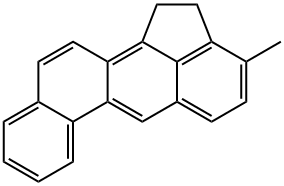
What is 3-METHYLCHOLANTHRENE?
Description
3-Methylcholanthrene (3-MC) is a member of the polycyclic aromatic hydrocarbon (PAH) family and is used as an experimental cancer research chemical. As other PAHs, 3-MC might be found in trace quantities in coal tar and heavy-end petroleum hydrocarbons.
Chemical properties
Yellow Crystalline Solid
Chemical properties
The term “coal tar products,” as used by NIOSH, includes coal tar and two of the fractionation products of coal tar, creosote and coal tar pitch, derived from the carbonization of bituminous coal. Coal tar, coal tar pitch, and creosote (coal tar creosote 8001-58-9) derived from bituminous coal often contain identifiable components which by themselves are carcinogenic, such as benzo(a) pyrene, benzanthracene, chrysene, and phenanthrene. Other chemicals from coal tar products, such as anthracene, carbazole, fluoranthene, and pyrene may also cause cancer,but these causal relationships have not been adequately documented. Also, the research chemical methylcholanthrene (CAS: 56-49-5), a powerful carcinogen, fits this category. Coal tar pitch is a black viscous liquid. Aromatic solvent odor. Boiling point =>260°C; specific gravity (H2O:1) = 1.07-108; freezing/melting point = 250-°180C;flash point = 207°C (coal tar pitch); 74C (creosote oil);autoignition temperature =>510°C. Insoluble in water.Coal tar creosote (8001-58-9, crosote) is an black oily,tar-like substance. Pungent odor
Chemical properties
3-Methylcholanthrene is a solid that crystallizes from benzene and ether as pale yellow prisms. 3-methylcholanthrene is insoluble in water and soluble in alcohol. It is combustible, and can react with oxidizing materials.
The Uses of 3-METHYLCHOLANTHRENE
3-Methylcholanthrene has been used to assess its tumor initiation activity by Bhas 42 cell transformation assay. It has also been used to induce the activity of cytochrome P450.
The Uses of 3-METHYLCHOLANTHRENE
A carcinogen
The Uses of 3-METHYLCHOLANTHRENE
3-MC is used experimentally as a positive control in cancer research and in biochemical research to induce specific forms of cytochrome P450. Other than this, there is no particular use for this chemical except as a possible chemical intermediate.
What are the applications of Application
3-Methylcholanthrene is a potent aryl hydrocarbon receptor agonist and carcinogen used to induce transformation of cultured cells.
Definition
ChEBI: A pentacyclic ortho- and peri-fused polycyclic arene consisting of a dihydrocyclopenta[ij]tetraphene ring system with a methyl substituent at the 3-position.
Synthesis Reference(s)
The Journal of Organic Chemistry, 47, p. 2120, 1982 DOI: 10.1021/jo00132a026
General Description
Yellow crystals or solid.
Air & Water Reactions
Insoluble in water.
Reactivity Profile
3-METHYLCHOLANTHRENE can react with oxidizing materials. Ozone and chlorinating agents oxidize 3-METHYLCHOLANTHRENE.
Hazard
Powerful carcinogen.
Fire Hazard
Flash point data for 3-METHYLCHOLANTHRENE are not available; however, 3-METHYLCHOLANTHRENE is probably combustible.
Biochem/physiol Actions
3-Methylcholanthrene is a carcinogen used to induce transformation of cultured cells. It is also used to induce fibrosarcomas and skin carcinomas in laboratory animals. 3-methylcholanthrene is a potent aryl hydrocarbon receptor agonist.
Safety Profile
Suspected carcinogen with experimental carcinogenic, neoplastigenic, and tumorigenic data. Poison by intravenous and intraperitoneal routes. Experimental teratogenic and reproductive effects. Human mutation data reported. When heated to decomposition it emits acrid smoke and irritating fumes.
Potential Exposure
The coke-oven plant is the principal source of coal tar. The hot gases and vapors produced during the conversion of coal to coke are collected by means of a scrubber, which condenses the effluent into ammonia, water, crude tar, and other by-products. Crude tar is separated from the remainder of the condensate for refining and may undergo further processing. Employees may be exposed to pitch and creosote in metal and foundry operations; when installing electrical equipment; in construction, railway, utility; and briquette manufacturing.
Carcinogenicity
3-Methylcholanthrene is a rapid, all-around neoplastic agent and a potent liver tumorigen.
Environmental Fate
3-MC, when released to soil, adsorbs strongly to the soil and does not leach. It does not biodegrade or hydrolyze significantly but may evaporate from dry soil. If released to water, it is expected to adsorb strongly to sediment and to bioconcentrate in aquatic organisms. If released into the atmosphere, it may be subject to direct photolysis because it absorbs strongly in the ultraviolet (UV) spectrum of light. It may also react with peroxyl radicals already present in the atmosphere. Its estimated half-life in the atmosphere is 2.8 h. Considering an octanol/ water log concentration ratio of 6.42, a bioconcentration factor of 45 000 has been estimated.
Shipping
UN1136 Coal tar distillates, flammable, Hazard Class: 3; Labels: 3-Flammable liquid
Toxicity evaluation
Metabolic activation of PAHs consists of oxidation of the rings of unsubstituted PAHs. These oxidations are carried out by mixed function oxidases of the liver, which contain cytochromes P450 and P448 and require reduced nicotine adenine dinucleotide and oxygen. In this oxidation, an epoxide intermediate is formed that has been shown to have the requisite chemical reactivity to bind covalently with DNA and histones and to serve as the ultimate carcinogenic form of PAH. Administration of 3- MC to rats increased hepatic nuclear proteins and caused a turnover of protein of the endoplasmic reticulum. Studies of 14C amino acid incorporation showed that 3-MC causes increased protein synthesis and reduced degradation of protein.
Incompatibilities
Incompatible with strong oxidizers (chlorates, nitrates, peroxides, permanganates, perchlorates, chlorine, bromine, fluorine, etc.); contact may cause fires or explosions. Keep away from alkaline materials, strong bases, strong acids, oxoacids, epoxides. Phenols, such as creosote react as weak organic acids. Phenols and cresols are much weaker as acids than common carboxylic acids (phenol has pKa = 9.88). These materials are incompatible with strong reducing agents such as hydrides, nitrides, alkali metals, and sulfides. Flammable hydrogen gas is often generated, and the heat of the reaction may ignite the gas. Heat is also generated by the acid-base reaction between phenols and bases. Such heating may initiate polymerization of the organic compound. Phenols are sulfonated very readily (e.g., by concentrated sulfuric acid at room temperature). The reactions generate heat. Phenols are also nitrated very rapidly, even by dilute nitric acid
Waste Disposal
Dissolve or mix the material with a combustible solvent and burn in a chemical incinerator equipped with an afterburner and scrubber. All federal, state, and local environmental regulations must be observed.
Properties of 3-METHYLCHOLANTHRENE
| Melting point: | 178-180 °C (lit.) |
| Boiling point: | 280 °C/80 mmHg (lit.) |
| Density | 1.28 g/cm3 (20℃) |
| refractive index | 1.4664 (estimate) |
| Flash point: | -5 °C |
| storage temp. | room temp |
| solubility | Chloroform (Slightly), Ethyl Acetate (Slightly) |
| form | neat |
| color | Yellow to Dark Yellow |
| Water Solubility | 2.9ug/L(25 ºC) |
| Merck | 13,6072 |
| BRN | 1913890 |
| Stability: | Stable. Combustible. Incompatible with strong oxidizing agents. |
| CAS DataBase Reference | 56-49-5(CAS DataBase Reference) |
| EPA Substance Registry System | 3-Methylcholanthrene (56-49-5) |
Safety information for 3-METHYLCHOLANTHRENE
| Signal word | Danger |
| Pictogram(s) |
 Health Hazard GHS08 |
| GHS Hazard Statements |
H350:Carcinogenicity H413:Hazardous to the aquatic environment, long-term hazard |
| Precautionary Statement Codes |
P201:Obtain special instructions before use. P273:Avoid release to the environment. P308+P313:IF exposed or concerned: Get medical advice/attention. |
Computed Descriptors for 3-METHYLCHOLANTHRENE
Abamectin manufacturer
Inventichem
New Products
4-AMINO-TETRAHYDRO-PYRAN-4-CARBOXYLIC ACID HCL 4-(Dimethylamino)tetrahydro-2H-pyran-4-carbonitrile 4-Aminotetrahydropyran-4-carbonitrile Hydrochloride (R)-3-Aminobutanenitrile Hydrochloride 3-((Dimethylamino)methyl)-5-methylhexan-2-one oxalate 1,4-Dioxa-8-azaspiro[4.5]decane 5-Bromo-2-nitropyridine Nimesulide BP Aceclofenac IP/BP/EP Diclofenac Sodium IP/BP/EP/USP Mefenamic Acid IP/BP/EP/USP Ornidazole IP Diclofenac Potassium THOMAIND PAPER PH 2.0 TO 4.5 1 BOX BUFFER CAPSULE PH 9.2 - 10 CAP SODIUM CHLORIDE 0.1N CVS ALLOXAN MONOHYDRATE 98% PLATINUM 0.5% ON 3 MM ALUMINA PELLETS (TYPE 73) LITHIUM AAS SOLUTION 2-Bromo-1-(bromomethyl)-3-chloro-5-nitrobenzene 2-Bromo-3-nitroaniline N-(3-Hydroxypropyl)-N-methylacetamide 3-Bromo-6-chloropyridazine 4-ethyl-3-nitrobenzoic acidRelated products of tetrahydrofuran

![3-METHYLCHOLANTHRENE, [3H]-](https://img.chemicalbook.in/StructureFile/ChemBookStructure5/GIF/CB3451115.gif)

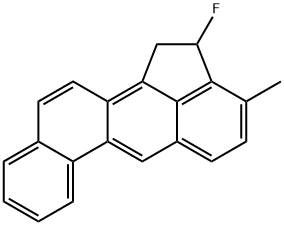
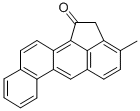
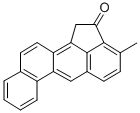
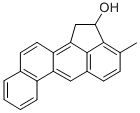

You may like
-
 56-49-5 3-Methylcholanthrene 98%View Details
56-49-5 3-Methylcholanthrene 98%View Details
56-49-5 -
 3-Methylcholanthrene CAS 56-49-5View Details
3-Methylcholanthrene CAS 56-49-5View Details
56-49-5 -
 3-Methylcholanthrene solution CAS 56-49-5View Details
3-Methylcholanthrene solution CAS 56-49-5View Details
56-49-5 -
 3-Methylcholanthrene CAS 56-49-5View Details
3-Methylcholanthrene CAS 56-49-5View Details
56-49-5 -
 1823368-42-8 98%View Details
1823368-42-8 98%View Details
1823368-42-8 -
 2-(3-(tert-butyl)phenoxy)-2-methylpropanoic acid 1307449-08-6 98%View Details
2-(3-(tert-butyl)phenoxy)-2-methylpropanoic acid 1307449-08-6 98%View Details
1307449-08-6 -
 Ethyl 3-(furan-2-yl)-3-hydroxypropanoate 25408-95-1 98%View Details
Ethyl 3-(furan-2-yl)-3-hydroxypropanoate 25408-95-1 98%View Details
25408-95-1 -
 Lithium ClavulanateView Details
Lithium ClavulanateView Details
61177-44-4